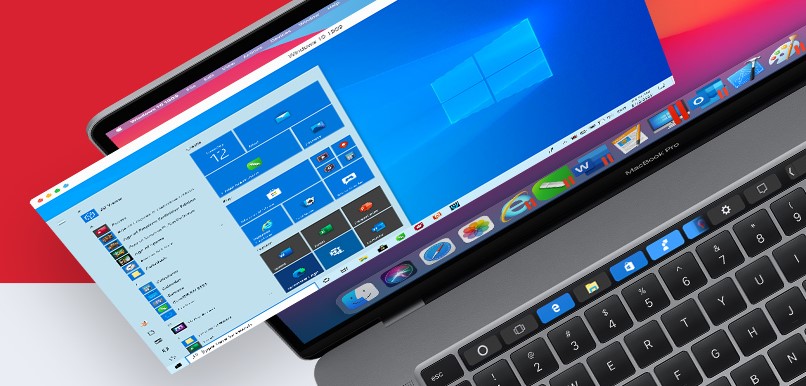Parallels says running a Windows 10 ARM Insider Preview virtual machine natively on an M1 Mac results in up to 30 percent better performance compared to a 2019 model 15-inch MacBook Pro with an.
For years, people have speculated about the ability to run iOS apps on the Mac. This speculation was caused by the increasing similarity in the user experiences across the Mac, the iPhone and the iPad, and by Apple’s continuing tech demos showing their work on this capability.
Parallels Apple M1 App

Dec 17, 2020 Parallels has released a Technical Preview Program for running Parallels Desktop 16 on M1-powered Macs. The company says that it created a “new virtualization engine that uses the Apple M1 Mac. Parallels released a new version of its flagship software today that allows you to run Windows 10 on Apple's M1 MacBooks. Parallels Desktop 16.5 is more energy efficient and delivers better. Parallels is actively working on a new version of its virtualization software that will be compatible with Apple Silicon and M1 machines, the company said on Tuesday. The company said it is.
Well, that day has finally arrived. Parallels® just released a new version of the Parallels® Access iOS client that can also be run on an M1 Mac.
I will admit that I was never really that interested in running an iOS app on my Mac, but I now see that I was wrong. This is pretty neat! In addition to Parallels Access, I installed a few other iOS apps on my Mac, among them, HBO Max. In general, a dedicated, special built app will almost always be better than using a webpage with similar functionality. And that is true for Parallels Access and true for HBO Max.
Parallels Apple M1 Download
How to install an iOS app on an M1 Mac
The process of finding iOS apps that you want to download and install on an M1 Mac is a bit obtuse right now. (Figure 1). You use the App Store, but to find the iOS apps, you must first go to your account by clicking on your name in the main App Store window, and then use the selector buttons “Mac Apps” or “iPhone & iPad Apps” and choose “iPhone & iPad Apps”. Then you can search for the iOS app you want, for example “Parallels Access”. Hopefully, this will be easier and less circuitous in the future.
If you can’t find an iOS app that you know exists, this may be because the developer has marked the app as not downloadable on a Mac. This is often because the developer has not yet tested the iOS app on the Mac.
Running the Parallels Access iOS client on a Mac
Running the Parallels Access iOS client on a Mac looks just like using it on an iPad (Figure 2).
In this figure you can see that I have seven remote computers set up in Parallels Access: three MacBook Pros, two 27˝ iMac computers, one 21˝ iMac running macOS Catalina, and a really old ThinkPad running Windows 7. I can access any of them from the Parallels Access client on my iPad or on my M1 MacBook Pro. (Of course, I can also access these remote computers from any computer with a modern browser, but that is not the focus of this post.) Most importantly, the experiences on the M1 Mac and the iPad are nearly identical. The Mac has no touch screen, and the iPad has no mouse, but aside from these differences, Parallels Access is the same on both platforms.
Video 1 shows some of the Parallels Access functionality from the iOS client running on the M1 MacBook Pro. You can see the Remote Assistance feature added to Parallels Access last summer is available in Parallels Access when you run it on the M1 Mac.
I am also happy to report that the amusing “bug” that is present in almost every remote access application is present in Parallels Access on the M1 Mac: the ability to recursively access the very computer you are running the application from. You can see the result of this in Figure 3.
If you have an M1 Mac, let us know in the comments what iOS apps you have installed on it.
Parallels Apple M1 Software
Parallels Access terminology check
Parallels Access is composed of two pieces of software: The Parallels Access client, which is installed on your phone or tablet, and the Parallels Access agent, which is installed on your Mac and PC. These two pieces of software work together to deliver remote access to your Mac and PC. You may have heard that:
The latest version of Parallels Access is a universal binary, meaning it contains the necessary code to run at full speed on either Mac with Intel processor or Mac with the Apple M1 chip.
This is true, but at the time that this was written, the only part of Parallels Access that ran on the Mac was the agent, so saying that the agent is now a universal binary is unnecessary. Well, the world has changed. Since Parallels Access can now run on the Mac—actually only on a Mac with an M1 chip—I would re-word that earlier statement to become:
Apple M1 Parallels X86
The latest version of the Parallels Access agent is a universal binary, meaning it contains the necessary code to run at full speed on either Mac with Intel processor or Mac with the Apple M1 chip.
